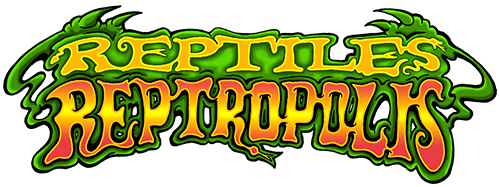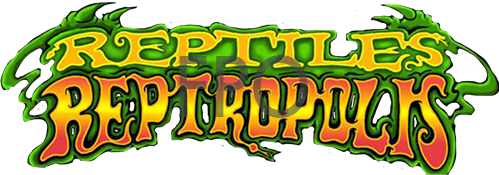CARE & SUPPLIES
(949) 492-6598
QUALITY BRED
CAPTIVE SINCE 2008
QUALITY BRED
CAPTIVE SINCE 2008
CARE & SUPPLIES
(949) 492-6598
PHIL
loves online shopping
hates crowds
SNAKES
CORN SNAKE CARE SHEET
Corns are commonly found in deciduous forests, pine barrens, rocky hillsides and farm areas over a broad swath of the United States (Alabama, Arkansas, most of Colorado, Delaware, Florida, Georgia, Illinois, Kansas, Kentucky, Louisiana, Maryland, Mississippi, Missouri, Southern Nebraska, New Jersey, New Mexico, North Carolina, Oklahoma, South Carolina, Texas, Eastern Utah, Virginia). They have also been reported in Mexico (Chihuahua, Coahuila, North Durango, Nuevo Leon, Tamaulipas) and the Cayman Islands.
Corns are most active at night or in the hours of dawn and dusk (crepuscular). While they are primarily ground-dwellers, some are semi-arboreal.Hatchlings range in size from 9 to 14 inches. Adults are generally 2.5 to 5 feet in length; most are in the 3- to 4-foot range. The average lifespan of these snakes is 12 years, although the longest-lived was 21 years old.
When selecting a corn or rat snake, look for a well-fleshed body, no visible cuts or abrasions, clear, alert eyes, tongue flicking, no signs of mites or ticks. The vent should be clean.
HOUSING
Adult Corns should be housed in at least a 20-gallon tank. Babies can be housed in a 10-gallon tank. The tank should have a secure sliding top lid. A determined snake can push against a loose screen lid until it finds an opening big enough for its head to fit out. Where its head goes, its body will follow. Many people believe that a reptile will not grow any larger that its tank. THIS IS NOT TRUE! The reptile keeps growing and will become miserable if the proper tank size is not provided. Some snakes constantly rub their nose against the screened top in an effort to find a way out. The snake should have a hiding place, a branch for climbing and resting, and a water bowl that is big enough for them to soak in during shedding cycles.
Branches collected from the outside need to be debugged by soaking first in bleach water, then rinsed thoroughly, soaked again in clean water and left in the sun for a couple days to dry. You can also bake branches at a low temperature in the oven. You can bake branches at about 200 degrees for 30 minutes to an hour. DO NOT LEAVE UNATTENDED! Don’t increase the temperature hoping to finish the job faster. Doing so will increase your chances of the wood catching fire.
SUBSTRATE
With corn snakes, there are a couple of different substrates that can be used, such as pine chips (NOT cedar chips; cedar chips are toxic to the snakes). The snakes will often burrow under the chips, so don’t be surprised if they are not always in view. If you use pine, aspen shavings, or cypress mulch, the urine and feces can be scooped out with a litter scoop, and fresh chips added as needed. Be sure to remove soiled substrate as soon as possible; urine-soaked material becomes a breeding ground for bacteria and fungus.
TEMPERATURE
An incandescent light bulb in a reflector shield should be set on the screen lid on the basking side to provide a basking area and create a temperature gradient. Bulb wattage will vary depending on the size of you terrarium and what season it is. Bulb wattage can be adjusted for summer and winter weather and best work with a rheostat, or dimmer switch.
An under-tank heat pad may be placed under the same half of the tank as your heat lamp. Be sure to have some room for air flow between the terrarium and whatever surface the terrarium is placed on. This leaves one side cooler so your snake can regulate its body temperature as needed. The cool end of the tank is where the water dish will be located.
Corn snakes must be kept at 75-85 F, the higher temperature being necessary to digest its food. Temperatures can fall to the lower 60 F range at night on the cool end. To easily monitor temperature, put inexpensive stick-on thermometers about an inch above the bottom of the tank on both the warm and cool sides. Don’t use hot rocks.. The temperature fluctuates too much, and too many reptiles suffer severe ventral burns.
FEEDING
An active snake will happily eat every 7 days or so. They will normally eat frozen thawed prey, or live. A snake who is not hungry when live prey is introduced often finds itself becoming the meal, especially if the prey is a rat.
To feed your snake, place it in a secure area like a paper bag or Tupperware container with drilled ventilation holes in the lid. You shouldn’t feed your snake in its terrarium; the snake may ingest wood chips, causing complications later.
When feeding frozen, remove the prey item from the freezer and allow time to defrost at room temperature. Once the prey item has been thawed it needs to be heated to above room temperature. Once thawed, place the prey in submerged hot water. Use forceps or tongs to pick up the rodent by the tail, and hold the prey in front of the snake for the snake to strike at.
Hatchlings start off with pinkie mice. As the snake grows, gradually increase the prey size by offering fuzzies, hoppers, then small adult mice. A full-grown Corn or Rat can eat a medium to large mouse or small rat. If you feed too much at one feeding session, or feed a prey item that is too large, your snake may regurgitate it.
WATER
A bowl of fresh water must always be available at all times. It will be used for drinking and sometimes for bathing. If the snake defecates in it, clean and disinfect the bowl immediately
HANDLING
Corns do not wrap snugly around your arm like pythons or kings. They tend to pick a direction and go for it. Though they are relatively small in body mass, they are quite strong. Always support the body and give free rein to the head. If the head starts going somewhere you don’t want it to go, gently guide it into another direction. Many snakes are nervous when introduced into a new situation with new people. Give them a couple of days to settle down before letting new people handle them.




